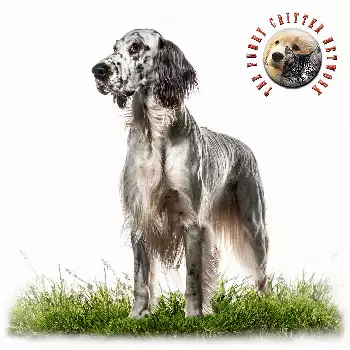The English Setter is most famously known as the Laverack Setter, a name honoring Edward Laverack, the 19th-century English gentleman who refined the breed through careful selection and meticulous record-keeping over several decades. Laverack's breeding program, beginning in 1825, transformed regional setting dogs into the elegant, consistent type recognized today as the English Setter. His dedication to breeding for both beauty and working ability created dogs of such quality that his name became permanently associated with the breed, particularly in reference to show-type English Setters that emphasize refinement and elegance alongside field abilities.
The distinction between Laverack and Llewellin lines represents an important chapter in English Setter history, with both strains descending from Laverack's foundation stock but diverging in emphasis and purpose. R. L. Purcell Llewellin acquired Laverack dogs in the 1870s and bred them with other setter lines to create dogs specializing in field performance. Llewellin Setters became renowned for their exceptional hunting ability and field trial success, developing a somewhat lighter, more agile build compared to the show-oriented Laverack type. While modern English Setters contain both bloodlines in varying degrees, the Laverack name particularly denotes dogs bred with emphasis on conformation, elegance, and dual-purpose abilities.
Historically, English Setters were simply called "setting spaniels" or "setting dogs," names that described their unique hunting style of crouching or "setting" when they located game birds. This behavior allowed hunters using nets to approach and capture the birds before firearms became common hunting tools. The evolution from spaniel-type dogs to distinct setter breeds occurred gradually over centuries, with regional variations developing throughout England. The modern name "English Setter" emerged to distinguish these dogs from Irish Setters and Gordon Setters, the three setter breeds recognized as distinct types by the late 19th century.
The breed's distinctive coat patterns earned specific terminology that remains standard in describing English Setter colors. The term "belton" describes the flecked or ticked appearance characteristic of the breed, named after a village in Northumberland where Laverack frequently hunted. Blue belton refers to black and white ticking, orange belton describes orange and white, lemon belton indicates light yellow and white, liver belton specifies brown and white, and tricolor combines blue belton with tan markings. This specialized color terminology distinguishes English Setter markings from the solid or minimally marked coats of other setter breeds.
The American Kennel Club recognized the English Setter in 1878, making it one of the first breeds registered when the AKC was founded. This early recognition reflects the breed's popularity in America during the late 19th century when wealthy sportsmen imported outstanding English Setters for hunting and field trials. The AKC classifies English Setters in the Sporting Group, acknowledging their primary purpose as hunting companions for upland game birds. The breed standard emphasizes both working ability and elegant appearance, maintaining the dual-purpose heritage that made these dogs valuable to hunters and attractive to those who appreciated canine beauty.
The United Kennel Club also recognizes the English Setter in its Gun Dog Group, using slightly different terminology but emphasizing the same sporting heritage. The UKC standard maintains focus on working ability while acknowledging the importance of proper conformation that allows efficient movement in the field. Both major American kennel clubs maintain separate standards for show and field-type English Setters, recognizing that breeding emphasis has created somewhat different physical types within the breed while both remain true English Setters.
The Kennel Club in the United Kingdom, the breed's country of origin, places English Setters in the Gundog Group and maintains the parent breed standard that influences international descriptions. British standards emphasize the breed's history and working heritage while describing the elegant appearance that makes English Setters distinctive among sporting breeds. The Fédération Cynologique Internationale recognizes the English Setter in Group 7, Section 2.2, classifying them among British and Irish Pointers and Setters. The FCI standard draws heavily from the British standard, ensuring international consistency in breed type and judging criteria.

